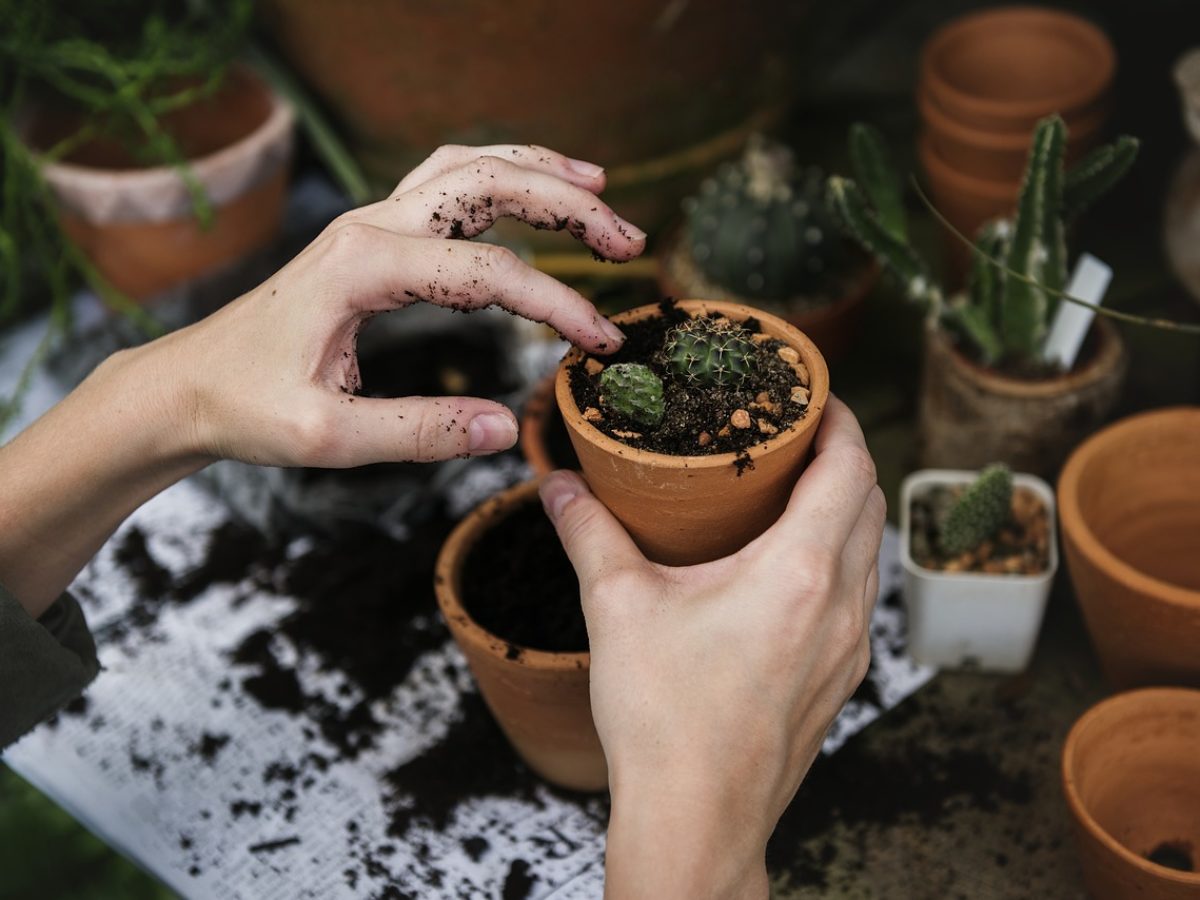Moving your plants outdoors during the summer is a great way to provide them with extra nutrients and help them grow. In fact, most plants will thrive outdoors and experience more growth than if left indoors. That said, it’s important to understand the potential pitfalls of moving your plants outdoors, pitfalls that could potentially damage your plants. Today we’ll look at some key items to keep in mind when moving your houseplants outdoors during the summer.
Timing
The first major thing to consider is when to actually move the plants outdoors. Generally, you want to wait until after your nighttime temperatures push past 50°F and it is past the last frost date. This ensures that your plants won’t be placed into an environment that will kill them. Some plants can actually survive a frost or colder nights, but most can’t.
This can be pushed a bit back a bit if you plan on bringing them indoors at night for the first few weeks. If the days are quite warm you can bring you plants out, and then move them back indoors during the cooler nights.
The biggest thing to keep in mind here is your frost dates. Frost is going to highly damaging to most indoor plants, so be absolutely sure you’re past it if you plan to leave your plants out overnight.
Gradual Movements
It’s also important to not overexpose your plants for the first 1-2 weeks. The biggest issue here is the much more intense light that sun is going to provide outdoors. Going from relatively low light of indoors to the bright sunlight outdoors can shock your plants.
The solution is to gradually introduce the plants, start by placing your plants in shade for a few hours at a time. Over the course of 1-2 weeks, gradually increase the intensity until you’ve reached the ideal conditions for your plant. Plants that are already receiving supplemental light from grows will generally adjust faster.
Another concern is temperature. The cooler temperatures can shock the plants; even if it’s technically warm enough for the plants it’s still often cooler than your home, especially at night. It’s recommended to move them indoors or at least to a warmer location during the night for the first couple of weeks.
Moving them into a garage or similar for the first couple of weeks at night is a good choice. These locations are typically cooler than your home, but not quite as cool as the outdoors, providing a nice in-between to help your plants acclimate. They also provide shelter from the wind which can drop the effective temperature significantly.
Lastly, there are also additional environmental concerns with heavy rain and winds. These types of external forces are not something an indoor plant experiences, and they typically don’t have any resistance built up to them. If you live in a location where this type of weather is common, watch out and take appropriate action such as sheltering your plants, or adding additional wire supports to keep the plants upright.
Pests
One thing that typically isn’t an issue while the plants are indoors, but can quickly become one when moved outdoors is pests. Moving your plants outdoors exposes them to the wide variety of pests that live there.
The first step to preventing pest infestation is educating yourself. Different plants are likely to attract different types of pests, and knowing which ones and how to spot them is crucial. The best defense against a pest infestation is to stop it before it starts.
It’s also important to spot check your plants regularly. This helps catch any issues before they can grow out of control. As mentioned, catching pests before they spread is the easiest way to deal with them.
If a pest infestation is detected, it’s important to act quick and appropriately. Different pests require different remedies, and some plants even respond better to different solutions. For more info, check out our article on common garden pests!
You should also be on the lookout for larger critters like squirrels or deer that might see your plants as a tasty treat. If you have these types of animals in your area then you need to take additional steps to protect your plants. Putting up barricades like chicken wire is a good way to keep your plants safe.
Feeding & Watering
With the increase sunlight outdoors, many plants will experience rapid growth. Even indoors plants typically do most of their growing in the summer, and being outdoors only increases this.
The important thing to keep in mind here is that extra growth requires extra nutrients. You’ve already got the increased sunlight, so all that’s left is soil nutrients and water. In both cases, you’re likely to have to increase how often you do it.
With watering, give your plants regular checks to make sure the soil is at their desired level of moistness. This can be a bit more sporadic than indoors because you get the benefit of the rain to help your watering schedule. Obviously, keep an eye on how much it rains, and adjust your schedule accordingly per your plants needs. Overall though, your plant is likely to need more water than when it was indoors.
Feeding will also depend heavily on the plant in question. For most container plants you’ll be looking to fertilize a few times over the summer, and do so with a diluted, water based fertilizer or slow release capsules. Summer is generally the heaviest season for feeding your plants and can be a huge factor in their growth.
Moving Them Back Indoors
Moving the plants back indoors for the winter is another process all its own. There are a couple of important considerations, so we’ve written a guide specifically on doing so. When it comes time to move your plants for the winter we highly recommend you give it a quick read.







